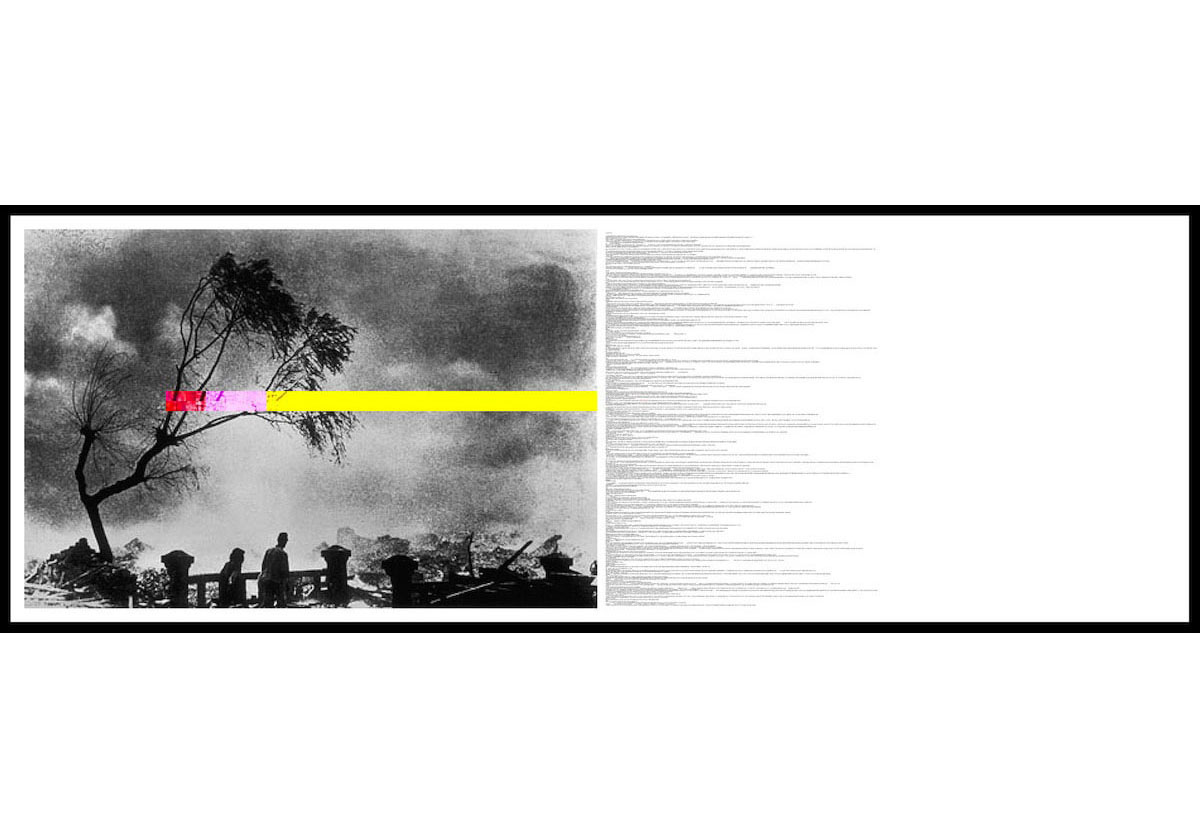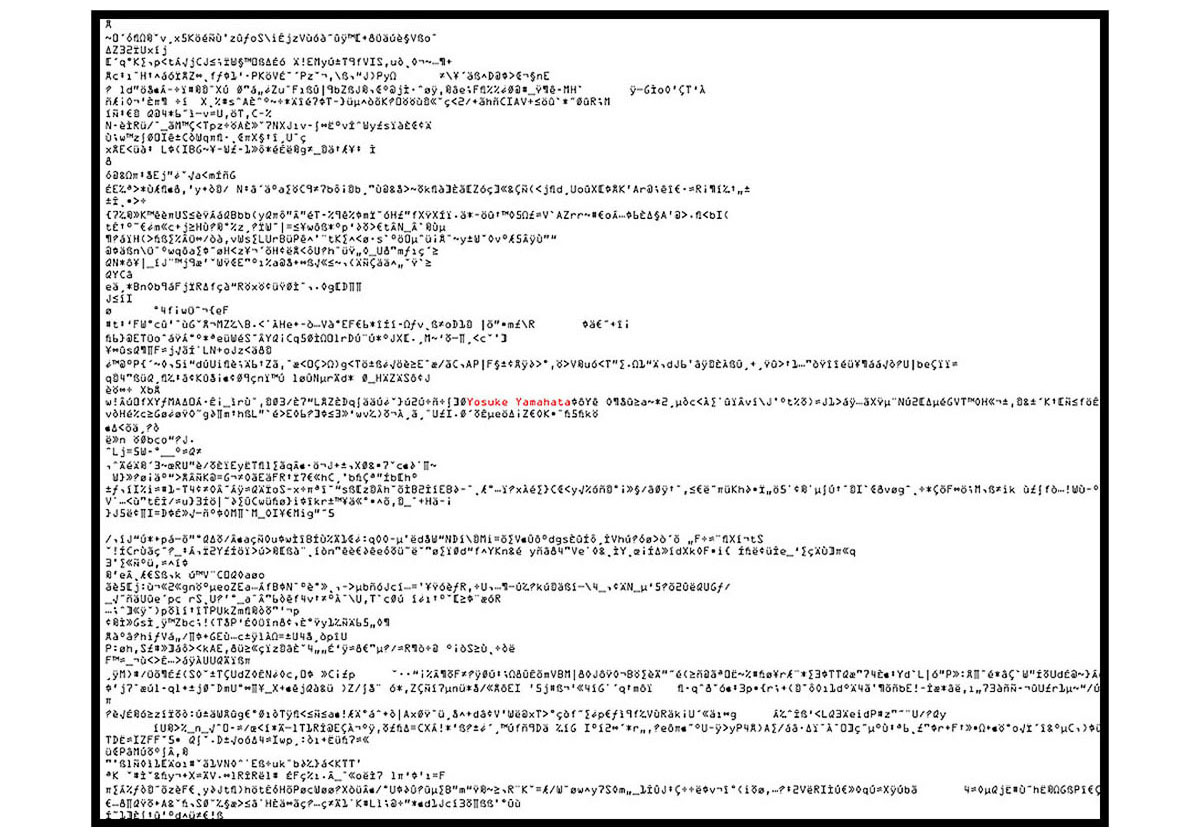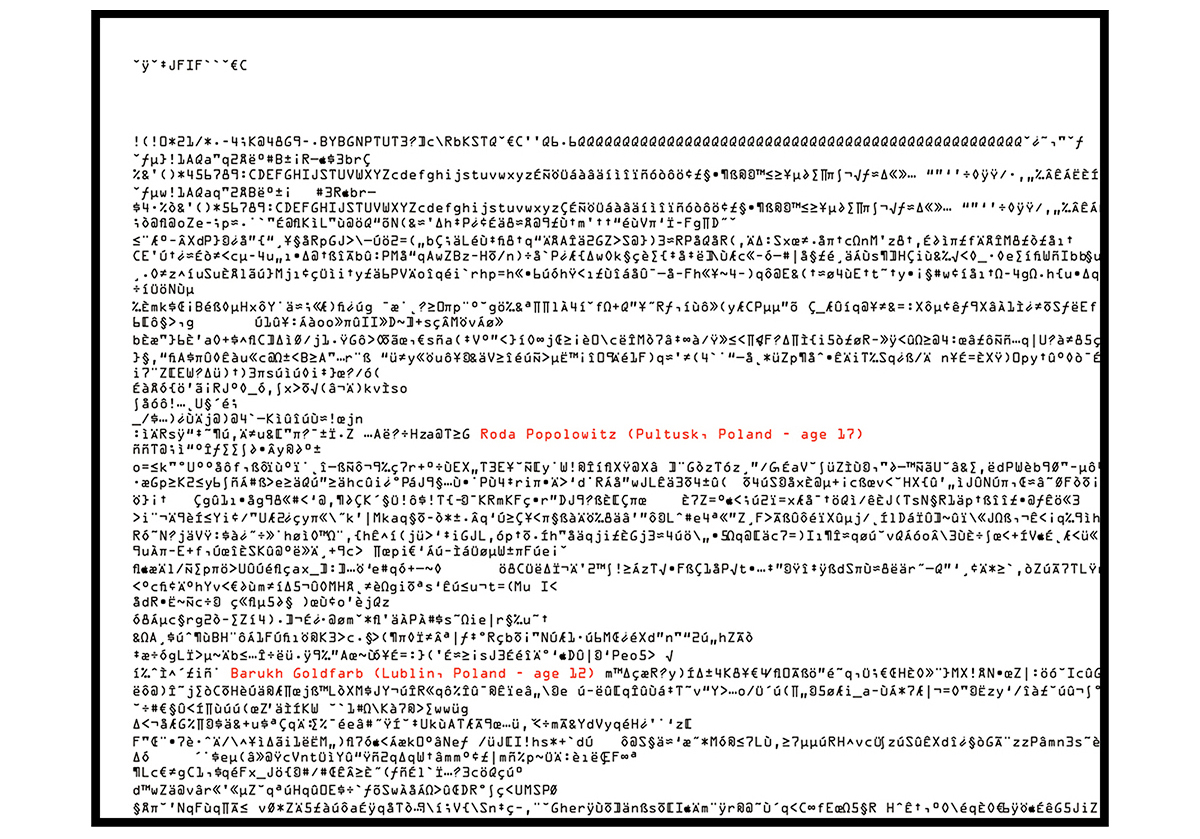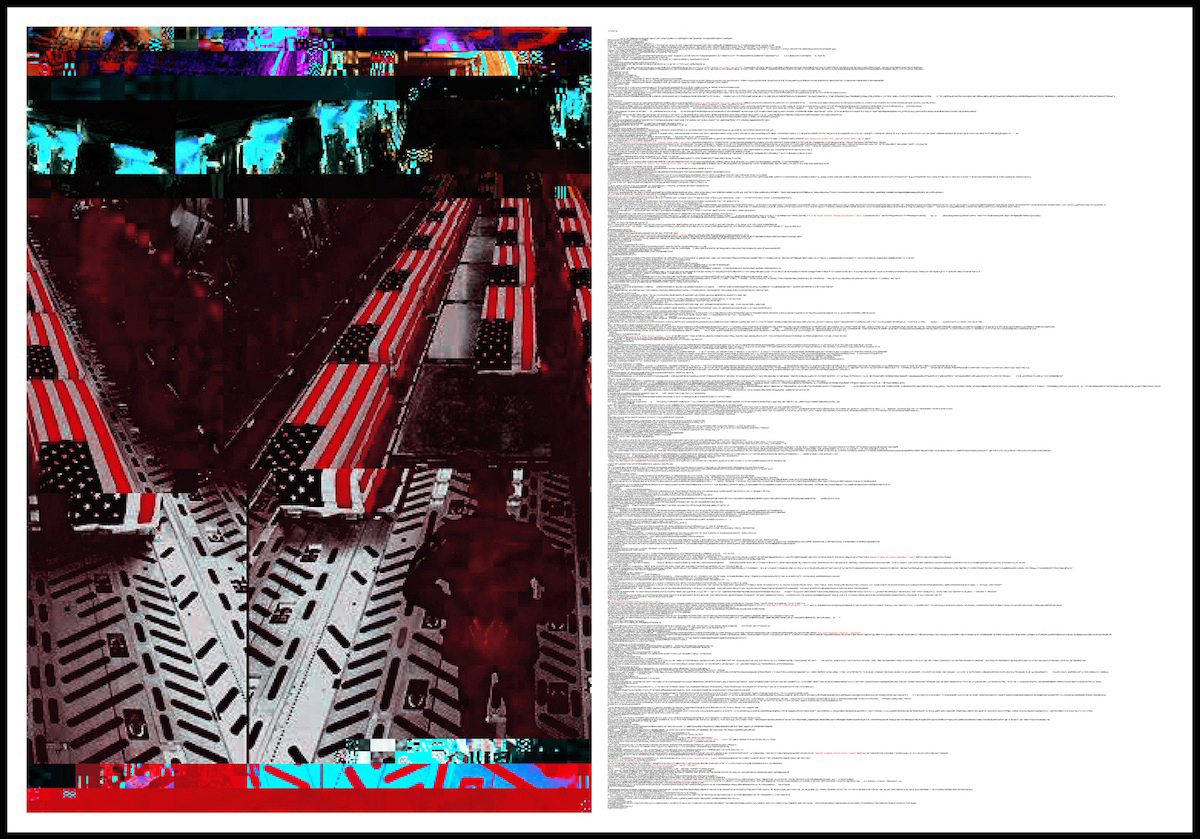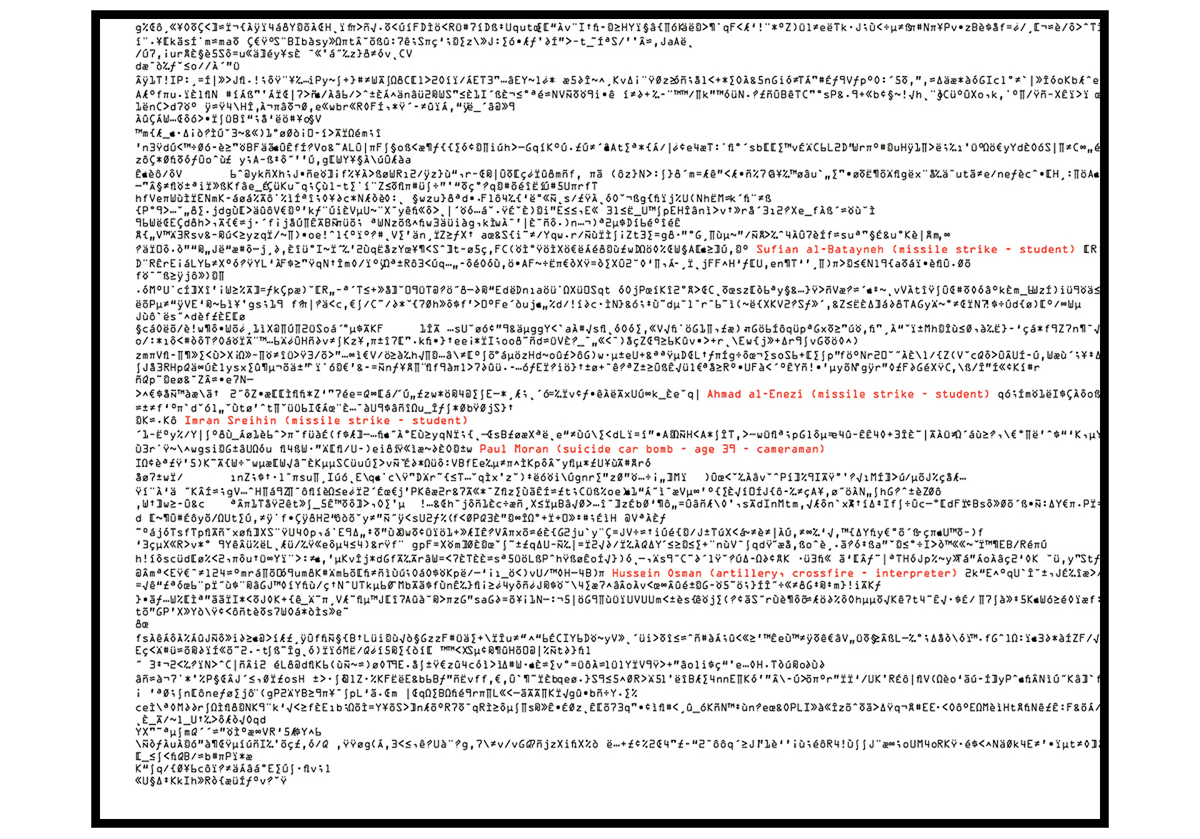EMBEDDED, 2011
Embedded focuses on the production and dissemination of images taken in times of conflict that have been the subject of a censorship or authorship dispute. The works employ a deliberate mismatch of language, disrupting the computer’s encoding process by inserting people’s names into digital photographic files and then rendering the corrupted code back into visual form.
Each piece from the series consists of a pair of prints framed together — one containing image and the other containing text. The mutated JPEG on the right is used to generate the fractured photograph on the left.
'Untitled I' from the series Embedded, 2011. Inkjet prints (text & image) framed together; 27 x 73 inches.
The photographer's name, Yosuke Yamahata, inserted into the digital code of his own photograph, rendered back into visual form. Yamahata died of cancer in 1966 as a result of radiation poisoning sustained whilst taking this photograph, immediately after the bombing of Nagasaki. A 1945 US Government directive stipulated that, 'Nothing shall be printed which might, directly or by inference, disturb public tranquility.'
'Untitled II' from the series Embedded, 2011. Inkjet prints (text & image) framed together; 33 x 73 inches.
Two names from the Yad Vashem Holocaust database inserted into the digital code of an image by an anonymous German military photographer, rendered back into visual form. The art historian Griselda Pollock notes that neither the time or place at which the original photograph was taken, nor the names of the subjects portrayed, have been determined with any historical accuracy, arguing that such images float freely, "as icons of the event, becoming generic rather than historically identified in terms of what was being witnessed, and above all by whom and why."
'Untitled III' from the series Embedded, 2011. Inkjet prints (text & image) framed together; 46 x 63 inches.
Twenty names from the Iraqi civilian casualty database inserted into the digital code of an image by an anonymous US military photographer, rendered back into visual form. The original photograph was released by the Pentagon in response to a Freedom of Information Act request, despite a media ban in place since 1991 prohibiting the depiction of repatriated American coffins.
